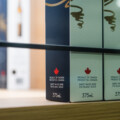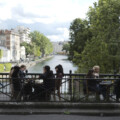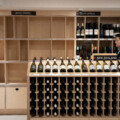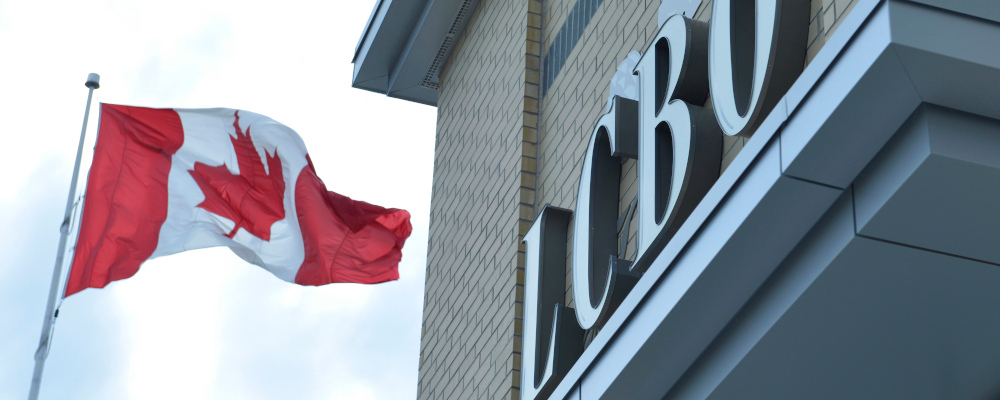I am back in Europe, moving east from Wales, where my family buried my father-in-law on Sunday, to England to spend some time with my sister-in-law and her family in Oxford. Most of my people will return to Canada on Saturday, but my eldest son and I will fly to Turin and spend the next week in Piedmont, where I will conduct some serious wine journalism on behalf of my dear readers, parsing the finer points between Barbaresco and Barolo.
In Wales, we talked about raiding Bill, my late father-in-law’s, wine cellar with Nancy, his widow. But our hearts weren’t really in it. Nothing really pairs with grief. In the end, we rallied last night, the last night, and liberated two bottles of Château Musar 2009, to go with some rib-eye steaks and a bunch of local asparagus I found that afternoon at the deli in Hay.
Bill was a champion of Musar before it became sought after as Lebanon’s most famous wine. The first time I met him we sat down in the medieval dining room at Holywell Manor, Oxford, he opened a magnum of 1982 Musar, which was then fifteen years old. It would have been remarkable enough, having come from a war year, but it was unquestionably delicious in any context.
At fourteen, the 2009 was in perfect form, the tannins having settled to silk and the black current fruit rising up through a mist of mint garrigue. Musar is one-third Cabernet Sauvignon, one-third Cinsault, and one-third Carignan. I had thought of Musar as a kind of Levantine Bordeaux, but this wine was classically Mediterranean. It didn’t cure sadness, but it lightened the mood enough to be savoured and enjoyed.
Before dinner we had another Mediterranean wine; an organic Viognier from the hilly northern reaches of the Languedoc, the Pays Herault. It came with the asparagus from the Hay Deli, where in a corner by the green groceries they sell a small and carefully curated selection of wines, mostly from France but with a few guest appearances from Italy and Spain.
The 2022 Domaine de Petit Roubié Viogner cost a little over 12 pounds, or about 20 Canadian dollars. Some wines from the same producer have been imported into Quebec and sold at the SAQ for between $20 and $25. At that price range the Petit Roubié offered great value; full of tropical and citrus fruit, but also redolent of Viognier’s white flower aromatic signature.
The wine reminded me of some of the better whites I tasted on a recent trip to Languedoc and Roussillon, especially the citrus notes that seem to be a hallmark of the grapes that are preferred in the South of France. Most of them were not presently being imported to Canada, or if they were, only to Quebec where consumer tastes are more adventurous, at least with French wines.
They were also, almost always, a little more expensive, or so I guessed by doing some rough math based on their price “at the cellar door”. This was doubly discouraging, and not just because it would be nice for my wine budget if there were more high-quality wines available at $20 than $30.
The problem with a $30 bottle of wine for sale in most parts of Canada (I mean the parts with government-controlled liquor monopoly retailers) is a marketing one. It’s not that Canadian consumers won’t take a chance on a $30 bottle of wine, it’s that to do so usually means taking a chance on a $450 case of wine.
Like any big retailer, the provincial liquor monopolies like to deal in big volumes, or at least high returns. Small producers making craft wines that would cost about $30 CAD often do not have enough wine to sell broadly through these inventory systems. And even if they did, it might not be in their interest to send a great percentage of their product into a system into which they have little if any control in terms of marketing, let alone terms of payment.
Craft wines at this price point are more often than not sold directly by the case through importing agents. But here’s the problem: the agents are bound in jurisdictions like Ontario to sell the wine in the configuration it came in. Some wines, especially if they are very expensive, come in half cases of six, but most are packaged in the global standard cardboard box of twelve.
As a consumer, if I spot a $30 wine I might like on the website of an agent, I am forced to make a commitment of $360 for a case, plus HST, plus any bottle deposit and shipping charges. The 13 percent tax on the service alone pushes the price past $400.

I would like to think that I am a pretty sophisticated wine consumer, with a broad knowledge of what gets offered at market. But I have more than once bought a case of wine that looked promising on the screen but turned out not to be to my taste. The first bottle, opened when the wine arrived, was disappointing. The other eleven were downright infuriating.
Back at the Hay Deli, there were no such problems. The stockists can calibrate their selection based on what they’d like to sell (organic, small producers) and what they think their customers might like, at any price. This is why, with only a couple dozen different wines, the deli’s selection is more interesting than the big box monopoly store I shop in in Toronto.
It’s also why the bottle shops in Toronto, which opened up during COVID and operate in a grey legal zone, continue to be popular even though they charge restaurant level mark-ups. Consumers know that it’s better to overpay once than twelve times in a row. Wouldn’t it be nice if they could buy those wines at a wholesale price and charge $20, $30, or however much one bottle at a time?
Recommended for You

Malcolm Jolley: The comfort of familiar favourites—or the fun of finding new wines?

Malcolm Jolley: An ‘Elbows Up’ wine project everyone can get behind

Malcolm Jolley: Need some summer wines? Look no further than the food-friendly, low-sugar sippers of the sunny Southern Rhône

Malcolm Jolley: Need a date-night drink? French Northern Rhône wines are worth the investment




